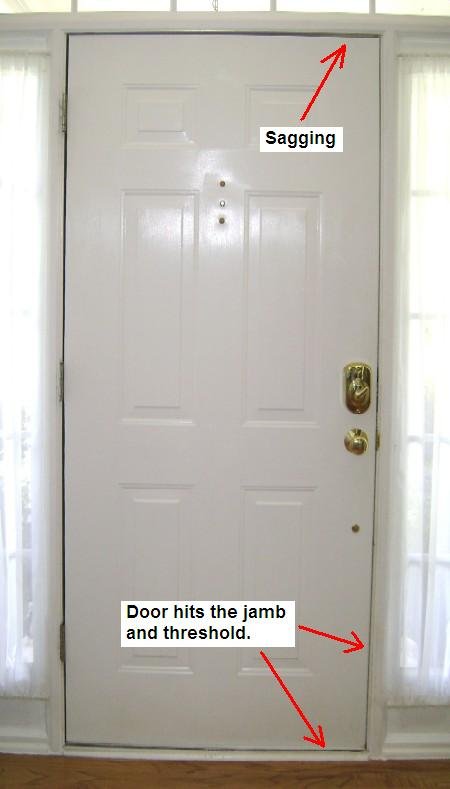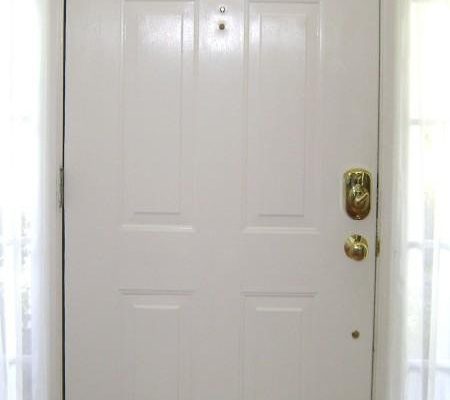
A sagging door knob lever can be caused by a few different issues, such as loose screws, internal wear and tear, or even the specific design of the knob itself. Some common brands like Schlage or Kwikset might face this issue more often due to everyday wear from use. It’s good to remember—just like we need a check-up now and then, our door hardware might need a little TLC too. Let’s dive into the reasons behind this sagging and how to fix it!
Understanding Why Door Knob Levers Sag
When your door knob lever starts to sag, it’s usually a sign of underlying problems. Here are some reasons why this might happen:
Loose Screws
Over time, the screws that hold the door knob in place can loosen. Think of them like the nuts on a bike wheel; if they aren’t tight, the whole thing wobbles. When your door knob isn’t secured tightly, it can start to droop. You might notice that the lever moves more than it should, which can lead to it hanging at a weird angle.
Wear and Tear
Just like our favorite jeans can fade and stretch out, door knobs can wear down too. Constant use can cause parts inside the knob to become worn or damaged, leading to a misaligned lever. If your knob is older or used frequently, it might need replacing or repairing to function like new again.
Improper Installation
Sometimes, the issue lies in the installation itself. If the knob wasn’t fitted properly from the start, it could sag right away. Imagine putting together a piece of furniture without following the instructions. You might end up with something that doesn’t stand straight or work right!
Common Fixes for a Sagging Door Knob Lever
Now that you understand why your door knob might be sagging, let’s explore some fixes.
Tightening the Screws
One of the simplest solutions is to tighten the screws. Grab a screwdriver and look for screws on the knob or the backplate. Start by gently tightening them—don’t go overboard, as you could strip the screws. If they’re too loose, it can lead to more problems down the line. Check the screws regularly as part of your home maintenance!
Replacing Worn Parts
If tightening doesn’t do the trick, it might be time to look for worn or damaged internal parts. You can usually find replacement parts at your local hardware store or online. Keep in mind that the specific parts you need will depend on the brand and model of your door knob. Sometimes, ordering a whole new knob can be the easiest solution.
Reinstalling the Knob
If you suspect improper installation is the issue, try removing the knob and reinstalling it correctly. First, take it off completely. Examine all the parts to ensure they’re in good shape. Once you’ve inspected everything, follow the installation instructions carefully to ensure a snug fit. Double-check the alignment to make sure the lever sits straight.
When to Consider Replacement
Sometimes, fixing a sagging lever just isn’t enough. Here’s when you might want to think about replacing the entire door knob.
Severe Damage
If your door knob is severely damaged or worn, it might not be worth the trouble to repair it. Look for cracks, rust, or any signs of significant wear. If you see any of these, it’s likely time for a new one!
Style and Functionality
As homes change over time, you might want a different style or type of knob. If your old knob doesn’t match your décor anymore, replacing it might not just fix the sagging but also give your door a fresh look.
Security Concerns
An old or sagging door knob can also pose a security risk. If the mechanism isn’t functioning properly, it could be easier for someone to break in. If safety is a concern, don’t hesitate to invest in a new, sturdy door knob.
Preventing Future Issues with Your Door Knob
Once you’ve fixed your door knob, it’s a good idea to take steps to prevent future sagging.
Regular Maintenance
Just like your car needs oil changes and check-ups, your door hardware needs attention too. Make it a habit to check your door knobs every few months. Tighten screws and inspect for wear to help keep everything working smoothly.
Choosing Quality Products
If you decide to replace your door knob, opt for a quality product. Some brands are made to last longer than others, and investing a little more upfront can save you money and hassle down the road.
Proper Installation
When installing new door knobs, follow the instructions carefully. If you’re unsure, don’t hesitate to ask a professional for help. A properly installed knob can save you from future headaches with sagging and wear.
A sagging door knob lever is often easy to fix once you pinpoint the cause. Whether it’s loose screws, wear and tear, or improper installation, addressing these issues can bring your door back to life. Regular maintenance goes a long way in keeping your hardware in check. If it’s time for a new knob, choose wisely to avoid future problems. Remember, your door knob is more than just a functional piece—it’s part of what makes your home feel inviting.
